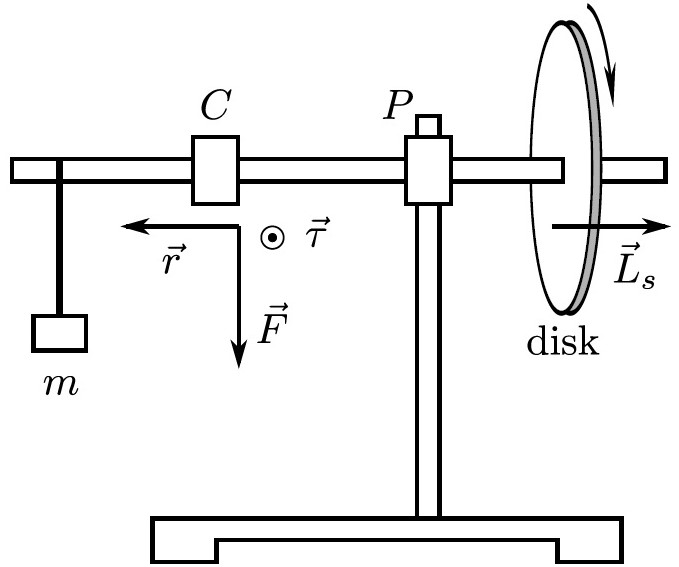To find the moment of inertia of gyroscope by measuring the precession frequency as a function of spin frequency of gyroscope.
Gyroscopes are used in compasses, in the steering mechanism of torpedoes and in inertial guidance systems. The objective is to find the moment of inertia of the gyroscope by measuring the precession frequency, as a function of the spin frequency of the gyroscope. The gyroscope that is free to rotate about all the three axes is balanced in horizontal position with the help of a counter weight C as shown in Fig. 7.1. As soon as a small weight is added on the left hand side of counter weight C, the gyroscope destabilizes and falls down. Remove the extra small weight, balance it again as before and spin the disk of the gyroscope with some angular velocity. Now hang the small weight again on the left hand side as before. The gyroscope now shows a completely new behavior and starts rotating in a direction perpendicular to the previous plane. This movement is known as precession. That is how a gyroscope increases the stability of a system. Try to explain this behavior using laws of mechanics. Can you cite some example from our everyday life where you see actual demonstration of this gyroscopic phenomenon?
If I is the moment of inertia of the gyroscope about its symmetric axis, the angular momentum L is given by,
(6.1)L = Iωg
where ωg is the angular velocity of the spinning gyroscope. Now, the addition of an additional weight m, at a distance r from the pivot point P, introduces a supplementary torque T
(6.2)
The gyroscope now starts precising with frequency ωp under the influence of T . Since T is perpendicular to L its effect is to change the direction of L. In a time dt, L will rotate by

Figure 6.1: Gyroscope experimental setup
dΦ, given by
(6.3)

where we have used Eqns. 6.1, 6.2 and 6.3. If Tp is the time for one precession revolution and T is the time taken by the gyroscope to spin about its axis (one rotation) then
(6.5)

Therefore from Eqn. 6.4,
(6.7)
Thus a plot of 1/Tg vs Tp should yield a straight line for a fixed m, from which the moment of inertia I of the gyroscope, can be obtained.